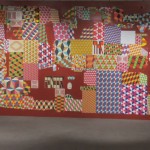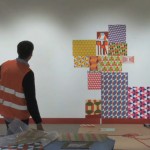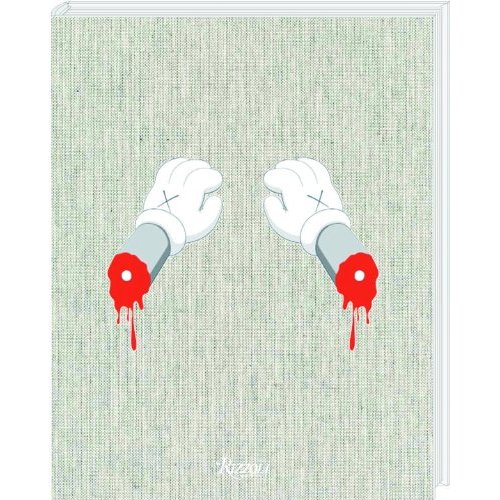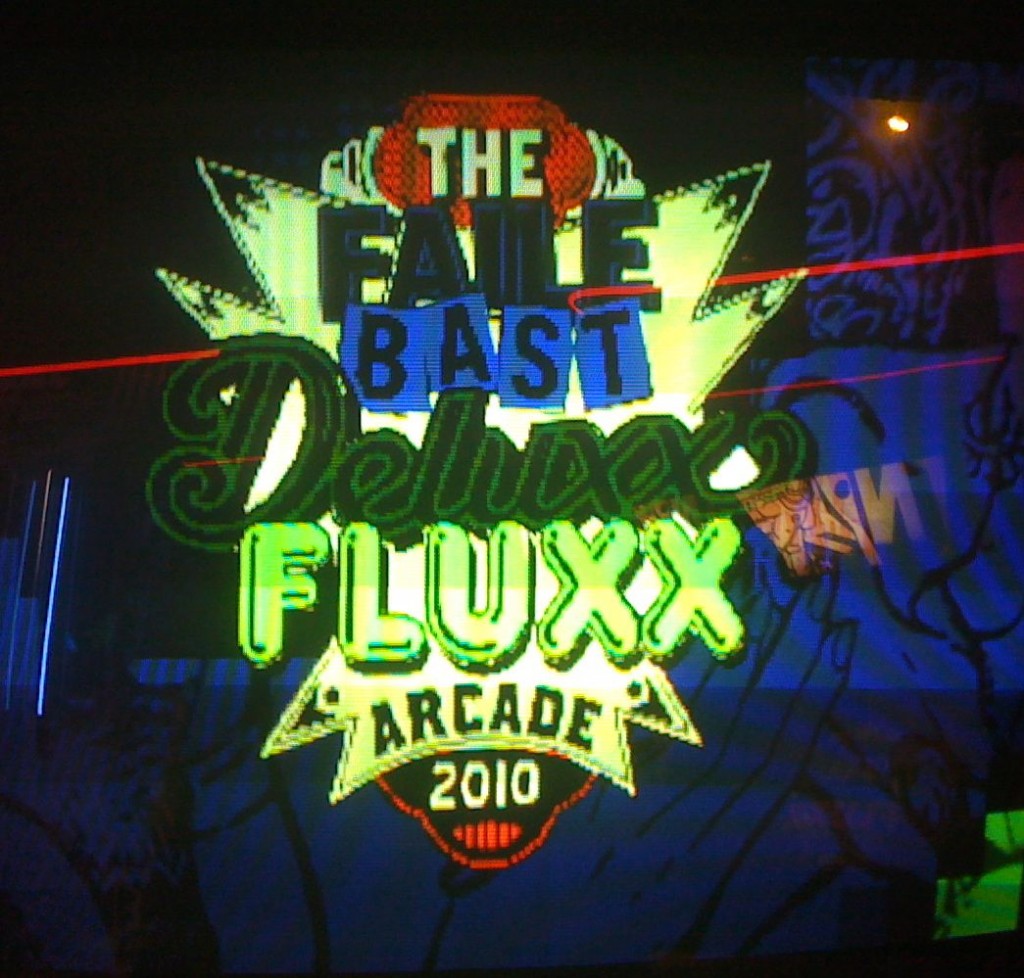Archive for June, 2010
Tuesday, June 8th, 2010
Speechless….
Commissioned for the Oakland Museum of California’s new Gallery of California Art. On view now through 2013.
Tuesday, June 8th, 2010
Amidst Controversy, Brandeis Weighs Renting Rose Collection
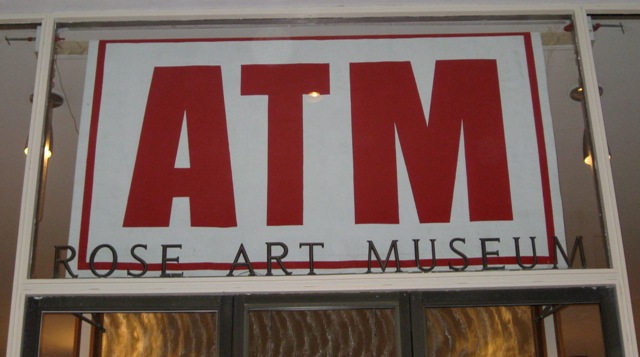
A sign erected by protesters on the night of a public hearing at the Rose Art Museum in February of last year. (Sarah Ewick via Bostonist)
Nearly a year and a half after Brandeis came under attack for voting to shore up university funds by closing down and selling off the Rose’s collection, the future of the museum still remains in question. After flip-flopping under pressure on its initial decision, Brandeis’ board is now considering renting out works from the Rose to generate income for the university.
In a press release dated May 28 and first reported by the Boston Globe, Brandeis announced that it was taking steps to “explore a range of alternatives to the sale of art from the Rose Art Museum in an effort to generate value from a portion of the collection while still maintaining ownership of the artwork.” More specifically, University President, Jehuda Reinharz, revealed that Brandeis was already “in discussions with Sotheby’s to solicit advice on non-sale partnerships, lending agreements and other creative solutions in the fundraising arena.”
To be clear, “lending” is less than upfront terminology to describe the potential plan. Simply put, Brandeis may be close to renting out portions of the 7,000+ piece Rose collection for profit.
Though the recent announcement makes sure to clarify that “Brandeis is committed to using a portion of any proceeds it realizes from art in the Rose Art Museum to directly benefit both the museum and the university’s Department of Fine Arts,” this really seems like lip service. It is abundantly clear that the universities’ motivation remains unchanged – to offset the economic troubles of Brandeis (not the Rose) by leveraging its control over the Rose’s collection as a cash-asset. No one who has been following these developments since last January has any doubt where the majority of any such revenue would end up – with the financially burdened university, and not with the Rose.
Furhtermore, while the university emphasizes that it would “Ideally…continue to own the art but find an innovative way to get value from it,” and that they have “not sold any art since that vote, and will not do so while it examines non-sale alternatives,” no guarantees have been given. In fact, Brandies has already cut a deal with Christies to put works on the auction block, if it ultimately decides to permanently shutter the Rose and deassess the collection.
Lee Rosenbaum (who has been diligently shedding light on the story since its beginning) makes some insightful new suggestions over on CultureGrrl – that preference should be given to Boston-area museums or educational institutions, that under no circumstances should Rose works be lent for private use by collectors or corporations, and that the core collection of important works from the collection should remain on campus, with the right to borrow back works from renters for educational or exhibition purposes.
For those who haven’t been following, the battle over the Rose began in January of last year, after Brandeis’ trustees announced it would close the museum and sell off its $350 million collection to insulate an increasingly threatened university endowment (see our previous reports here and here) which was hit hard by the global recession and Madoff scheme. With the support of every major museum association, The Rose’s board fired back on the grounds that the museum was not a university asset and such action would be in violation of the intentions of the museum’s founders, donors and established ethical codes. Controversy escalated further in July when museum overseers filed a lawsuit (read the full transcript here) to halt Brandeis from moving forward with its plans. While Brandeis has held off selling any art or closing the museum, they did fire the majority of the Rose’s staff, including the museum’s director, who has been outspoken against the university’s actions.
The proposed rental plan is certainly less egregious than the initial move to close the museum and toss its important public collection to the highest bidder. Moving forward, if Brandeis were willing to adhere to some ethical guidelines, like those proposed by Rosenbaum, at least it would allow for the Rose to remain a vital and active public institution, and carry out its original mission, as envisioned by its founders and early benefactors when it opened its doors in 1961.
Monday, June 7th, 2010
LACMA to host Baldessari Retrospective
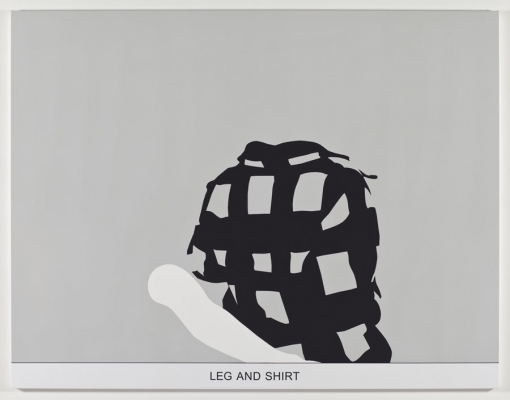
John Baldessari –Sediment: Leg and Shirt, 2010, Inkjet print and acrylic on canvas. (Image: © Margo Leavin /John Baldessari)
American art icon, John Baldessari, is the subject of a new retrospective set to open at the Los Angeles County Museum of Art on June 27. From pioneering conceptual text-based works of the 1960s, to his photographic amalgamation of film stills that helped to inform the art of appropriation, Baldessari has been at the forefront of multiple contemporary practices. John Baldessari: Pure Beauty will feature over 150 pieces, highlighting early works as far back as 1962, up to his most recent. The retrospective will also feature a special installation conceived especially for the occasion.
The museum will hold a free conversation with Baldessari and curator Leslie Jones at 2pm, opening day. Tickets for the event will be available on a first-come basis, one hour prior to the program. In addition, new 324 page exhibition catalog is available now in LACMA’s online shop.
Pure Beauty first debuted at the Tate Modern, London, in October 2009, before traveling to the Museu d’Art Contemporani in Barcelona. After LACMA, the exhibition will continue on to the Metropolitan Museum of Art, NY, this coming October.
Baldessari also has a new series of photographic works, entitled Sediment, on view through July 10 with Margo Leavin, Los Angeles. A work from the series is pictured above.
Monday, June 7th, 2010
Germano Celant Contributes to upcoming KAWS Book
KAWS‘ first comprehensive print survey is set to release September 21 via Rizzoli, one of the most respected names in art publishing. The book includes contributions by Monica Ramirez-Montagut, curator at The Aldrich Contemporary Art Museum in Connecticut (where KAWS opens his first museum show later this month) and Germano Celant, whose lengthy credentials include the titles of Director of Fondazione Prada in Milan, Senior Curator of Contemporary Art at the Guggenheim, Artistic Director of the first Florence Biennial in 1996, and Curator of the 1997 Venice Biennale.
This is not the first time Celant has taken an interest in artists who have crossed over from the street. In 2002 he curated Barry McGee’s first major international solo museum exhibition at Fondazione Prada, and interviewed the artist for the show’s catalog.
Celant’s interest in artists whose roots run deep in graffiti culture is easy to understand. His own contributions to contemporary art span more than 40 years, and can be traced back to the 1960s, when he spawned Arte Povera in Italy. Created in support of artists who were creating in mediums beyond those historically accepted, the loose-knit movement (literally translated as “poor art”) championed art made without any material, theoretical, or economic restraints, that, much like modern graffiti, could thrive free of the art-establishment or market place. It’s worth noting, just as many of that movement’s pioneers eventually reached larger levels of critical recognition and financial success, so have artists like KAWS and McGee.
Sunday, June 6th, 2010
Out of the Blue, Into the Air :: Yves Klein Retrospective at Hirshhorn

Yves Klein, Le Saut dans le vide [Leap into the Void], at 5, rue Gentil-Bernard, Fontenay-aux-Roses, France, October 1960. © 2010 Artists Rights Society(ARS), New York/ADAGP, Paris. Photo by Shunk-Kender, © Roy Lichtenstein Foundation. Courtesy Yves Klein Archives.
It is astounding that there hasn’t been a significant showing of Yves Klein in the U.S. for nearly three decades – almost as many years long as the artist’s short life. The fatal heart attack suffered by the 34 year old in 1962 signaled the end of a creative career that came and went in under a decade. Still, with little reference to anything that had come before, Klein’s contributions helped inform the transition from modern art’s focus on the tangible, to contemporary conceptual concerns with the theoretical.
The Hirshhorn Museum’s (Washington D.C.) current retrospective is a appropriate homage to such an important figure. Yves Klein: With the Void, Full Powers, includes major examples from every aspect of the artist’s career, including his Anthropometries, Cosmogonies, fire paintings, planetary reliefs, blue monochromes, sponge reliefs, “air architecture,” and immaterial works.
As crucial as his physical forms, are the ideas Klein communicated through bold and and acutely self-aware manifestos, personal notes, letters and interviews. Here, the museum has resurrected the artist-philosopher, allowing Kelin to share his own story and and ideas through a spirited and dynamic timeline that effectively aggregates multiple online social and media platforms. “We felt it was essential not only to present Klein as the maker of beautiful objects but also as a thinker, a philosopher who paved the way for future generations,” says exhibition co-curator Kerry Brougher, chief curator and deputy director of the Museum.
Selection from Yves Klein: The Blue Revolution. Director: François Lévy-Kuentz. Courtesy Yves Klein Archives. Coproduction © 2006 MK2TV, Le Centre Pompidou, Y Amu Klein/Moquay in association with France 5. Video © 2007 Le Réunion des musées nationaux—EDV 288
Visit the Hirshhorn now until September 12, and access the museum’s social media archive and interactive timeline here
Also essential are the online Yves Klein Archives and Pompidou’s archive of their 2007 exhibition.
Read on for more images Read the rest of this entry »
Sunday, June 6th, 2010
Condo Covers Kanye

(Photo: Gareth Cattermole/Getty)
After commissioning Takashi Murakami and Kaws for previous releases, Kanye West turns to George Condo for the cover design of his new single, the King Crimson-sampled Power. Of the three, Condo remains largely unknown by West’s younger street blog-savvy audience. Not that that matters much. With a career dating back to the early 80s, the 53 year old Condo is arguably the most established, with his paintings and sculptures residing in the permanent collections of major art institutions,including the Whitney (he participated in both the 1987 and 2010 Biennials), MoMA, and Guggenheim.
A 1995 oil painting by Condo is on view through June 19 at Luhring Augustine (NY), as part of Twenty Five, the gallery’s 25th anniversary group exhibit.
Power (which can be streamed here) is due out on iTunes June 8, with West’s next full length, Good As Job, expected to drop late 2010.
Sunday, June 6th, 2010
Reflecting on Deluxx Fluxx
Most of us around here agree that there is little new in street art that warrants gallery presentation. That’s not necessarily a criticism of the far too bloated genre. On the one hand, even the best graffiti art can suffer a loss of viability and meaning in formal display. On the other, there are the countless bandwagoneers who have taken to the streets in a soulless pursuit of financial gain within the art establishment – theirs has no legitimate claim to public view. Simply put, good graffiti doesn’t mean good exhibition art, and bad graffiti is just insulting. These days it can be quite a chore to weed through the clutter – both inside and outdoors.
FAILE has consistently been one of the rare exceptions. The duo have rightfully established themselves at the forefront of contemporary street art, reaching far beyond their early formula of combining Lichtensteinesque comic book mash-ups with masterful in-house printing. Their more recent forays into sculpture and production have yielded a unique brand of pop-Americana that has rightfully breached the confines of the Lazarides camp, winding up in tried and true venues, like Art Basel and even Gagosian.
The Deluxx Fluxx Arcade, their latest offering created in collaboration BÄST, is far from their most compelling work. With recent installations in London and New York, the result is more interactive video art than functional arcade. The only challenge pinball wizards will find here is to make sense of the near seizure-inducing mash-up of Faile and Bast motifs, churned through the rudimentary capabilities of 1980s gaming processors. Amidst a backdrop of black-light posters, the result is more spectacle than spectacular. One gets the sense this was done purely for kicks, and ideally it was not intended to be passed off as anything more – then again, the hefty price tags are a lot of cash to shell out on a box of fun. At the end of it all, while Deluxx Fluxx falls short of delivering what Faile are capable of, it hopefully signals the natural growing pains of a creative unit back-stepping along the way to something beyond nostalgic retro kitsch.
Up next for Faile, is Cathedral Project, a giant sculptural installation in the heart Lisbon, opening July 16 in conjunction with Portugal Arte 10. We fully expect to see something grand.

